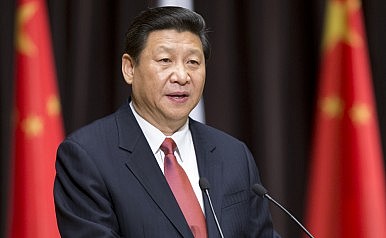| Online: | |
| Visits: | |
| Stories: |

| Story Views | |
| Now: | |
| Last Hour: | |
| Last 24 Hours: | |
| Total: | |
Where Is China’s Silk Road Actually Going?
Musings On The Finite Statist Machine
Where Is China's Silk Road Actually Going?
At the Boao Forum, China provided the clearest overview yet of its ambitious Silk Road plans.
By Shannon Tiezzi
March 30, 2015
The Boao Forum for Asia, an annual economic dialogue held in China’s Hainan Province, was an especially high-profile meeting this year; Chinese President Xi Jinping himself delivered the keynote address. The reason for the special emphasis was clear: Beijing selected the Boao Forum as the venue to deliver the first in-depth explanation of China’s vision for the Silk Road Economic Belt and Maritime Silk Road, collectively known as the “Belt and Road.”
During the Boao Forum, China’s National Development and Reform Commission (NDRC), in conjunction with China’s Foreign Ministry and Commerce Ministry, issued an action plan for the Belt and Road. Xinhua provided an English-language translation of the document. Beijing is not shy about its ambitions for the project — “The plan is expected to change the world political and economic landscape through development of countries along the routes, most of which are eager for fresh growth,” Xinhua wrote. Beijing hopes that annual trade volume between China and “Belt and Road” countries will “surpass 2.5 trillion U.S. dollars in a decade or so,” Xi said.
The plan is geographically ambitious as well, envisioning the Belt and Road as encompassing Asia, Africa, and Europe and their near seas. The land route “focuses on bringing together China, Central Asia, Russia and Europe,” the document noted. The Silk Road is envisioned as “a new Eurasian Land Bridge” created by transportation routes, with “core cites” as links in the chain. There were less details on the maritime route, though the plan noted there would be two legs: one linking China to the Indian Ocean via the South China Sea and the other traveling through the South China Sea to the South Pacific. There was no list of concrete projects associated with the Belt and Road, but China held up the $23 billion worth of deals just signed with Kazakhstan as a model for other countries.
The document laid out the basic goals of the Belt and Road:
“It is aimed at promoting orderly and free flow of economic factors, highly efficient allocation of resources and deep integration of markets; encouraging the countries along the Belt and Road to achieve economic policy coordination and carry out broader and more in-depth regional cooperation of higher standards; and jointly creating an open, inclusive and balanced regional economic cooperation architecture that benefits all.”
The Belt and Road are often understood primarily as infrastructure projects. Indeed, that will be the main focus in the early stages, as Chinese leaders have repeatedly spoken of infrastructure as a “bottleneck” preventing further economic cooperation. But there’s more to the Belt and Road than simply the construction of roads, railways, and ports. Even on the infrastructure front, China’s vision to “form an infrastructure network connecting all sub-regions in Asia, and between Asia, Europe and Africa” includes energy and communications infrastructure as well an transportation.
Source: http://americankabuki.blogspot.com/2015/07/where-is-chinas-silk-road-actually-going.html




